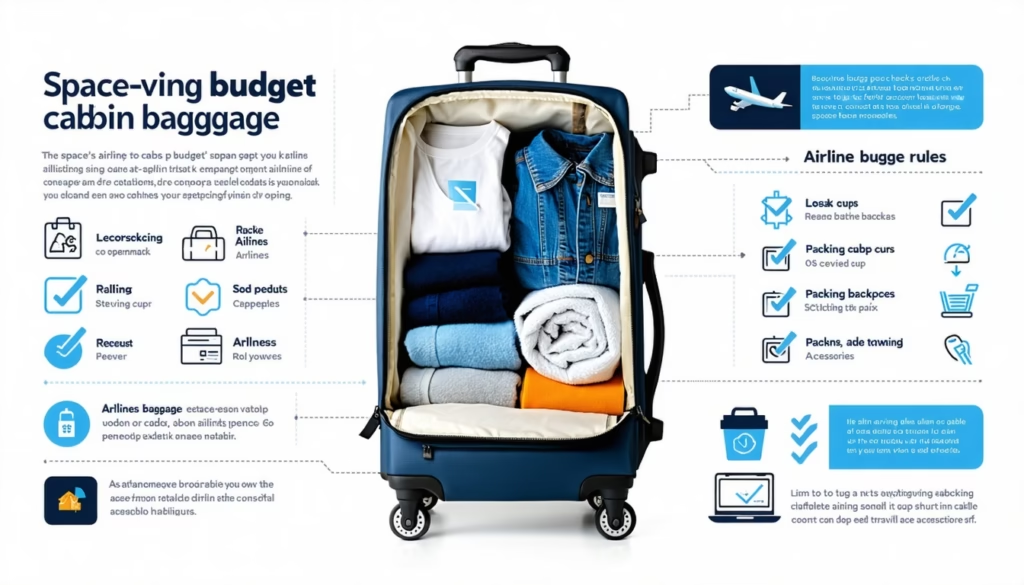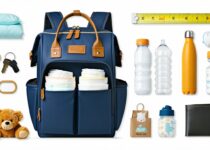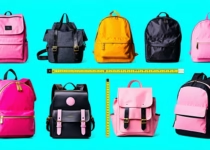Space-saving Hacks For Budget Airlines’ Cabin Baggage Rules

When you’re staring down a tiny under-seat bag allowance, it’s easy to feel defeated before you even zip up your pack. That’s why we’ve rounded up space‐saving hacks for budget airlines’ cabin baggage rules so you can breeze through check-in with room to spare. Whether you’re flying Ryanair, Spirit, Wizz Air, or any low-cost carrier, these insider tips will help you fit in everything you need—no surprise fees required.
Ready to cut bulk, streamline your carry-on, and dodge those extra-baggage charges? Let’s dive into practical strategies—from choosing the right backpack to mastering clever folding tricks—so your next trip feels like a breeze instead of a wrestling match.
Understand Airline Policies
Before you pack a single sock, check your carrier’s cabin baggage allowances. Budget airlines love to surprise you with strict size and weight limits. Missing a decimal or mixing up inches and centimeters can trigger hefty fees at the gate.
Key items to note:
- Exact dimensions (length × width × height) in cm or inches
- Weight limit per personal item or free cabin bag
- Whether wheels and handles count toward overall size
- Fees for oversized or overweight carry-ons
Tip: Save a screenshot of your booking confirmation or airline policy page on your phone. That way you’ll have proof if an agent gives you grief at the gate.
Choose The Ideal Backpack
Picking the right bag sets the tone for a stress-free packing session. Aim for a durable daypack or travel backpack that meets most budget airline size rules—typically around 40 × 30 × 20 cm (15.7 × 11.8 × 7.9 in).
What to look for:
- Lightweight, water-resistant fabric
- Slim profile with hidden straps or tuck-away handles
- Smart compartments for tech, documents, and toiletries
- Expandable gusset for extra room if needed
We like backpacks with built-in compression straps that flatten your load without bulging. If you need inspiration, check out best backpacks with hidden compartments for efficient packing or browse best travel backpacks with built-in packing compartments for top picks.
Pack Clothes Strategically
How you fold and arrange garments can make or break your space-saving mission. Two popular techniques—rolling and layering—keep wrinkles at bay while squeezing in more items.
| Packing Method | Pros | Cons |
|---|---|---|
| Rolling | Saves space, creates tight bundles | Can tangle delicate fabrics |
| Folding | Stacks neatly, ideal for structured pieces | Uses more volume overall |
For a deep dive on each approach, swing by how to roll vs fold clothes for maximum suitcase space or follow our step-by-step guide to layering clothes efficiently when packing. Here’s a quick combo strategy:
- Place rolled tees and leggings at the bottom
- Stack folded button-ups or denser fabrics in the middle
- Tuck thin items like scarves or swimwear into side gaps
Use Space-Saving Tools
Packing accessories earn their keep by squeezing out every last cubic inch. Two must-have helpers:
- Packing cubes: Divide and conquer your wardrobe, then compress each cube for a tidy block of clothes. See our tips at how to use packing cubes for ultimate luggage organization.
- Compression bags: Beat bulky sweaters and jackets into submission. Zip out air for instant volume loss, but be mindful of added weight if you push too much fabric in. Learn more in how to use compression bags to double suitcase space.
Pro tip: Label each cube or bag for “daily,” “evening,” or “extras” so you can grab what you need without unpacking everything.
Optimize Accessory Storage
Chargers, chargers everywhere—and not a socket to plug into. Keep your tech and small items in check:
- Cable organizer pouches or elastic loops inside your pack
- Use empty contact lens cases to hold SD cards, SIMs, and tiny jewelry
- Stash earbuds or charging bricks in a front-zip pocket for quick access
For detailed gadget hacks, check out how to fit tech gadgets and chargers without clutter and how to organize accessories and jewelry while saving space.
Manage Toiletries Smartly
Liquids can be travel’s biggest space hog—and leak hazard. Here’s how to tame that toiletry bag:
- Transfer shampoos and lotions into 3 oz (100 ml) TSA-approved bottles
- Pack solids like shampoo bars or conditioner blocks
- Choose a slim, wipe-clean travel pouch—explore compact toiletry bags that save luggage space
- Seal each bottle in a small zip-lock to prevent spills—this hack alone has saved us from soggy socks more than once
Need full guidance? See how to pack toiletries to save space and avoid leaks.
Wear Bulky Items
Free up precious bag inches by wearing your heaviest gear on the plane. Think:
- Bulky jacket or sweater instead of stashing it inside
- Hiking boots or sneakers in lieu of packing them
- Layered outfits that double as in-flight comfort wear
Bonus: You’ll stay cozy if the cabin gets chilly.
Weigh And Monitor Limits
Avoid surprise fees by weighing your loaded backpack at home. A handheld luggage scale costs under $20 and pays for itself after one fee waiver.
Tracking tips:
- Weigh before and after adding travel souvenirs
- Keep items under 7 kg (15 lb) for most European budget carriers
- Re-shift heavy gear to your daypack if you hit the threshold
Want to streamline further? Peek at space-saving packing hacks for carry-on only travelers or packing hacks for frequent flyers to speed up security.
Breeze Through Security
Speed through screening with these simple moves:
- Keep liquids pouch at the top so it’s easy to lift out
- Place electronics in an outer pocket for quick removal
- Wear slip-on shoes to skip the buckle step
Pro tip: Have your boarding pass and ID ready before you reach the x-ray belt. Less fumbling, more forward motion.
Packing Essentials Checklist
Before you head out the door, tick off this quick list:
- Lightweight backpack under size limit
- Organized packing cubes or compression bags
- Toiletries in approved containers
- Gadget pouch with cables and power bank
- Hand-held scale for weight checks
- Travel document folder in an easily reachable pocket
FAQs
How strict are budget airlines with cabin baggage dimensions?
Very. Most agents measure at check-in and at the gate. One centimeter over can trigger fees. Always double-check dimensions and pack precisely.
Can I carry an extra personal item?
It depends. Budget carriers often only allow one free personal item. Adding a second bag usually means paying an extra charge at booking or check-in.
What counts as a personal item versus a cabin bag?
A personal item fits under the seat—think small backpack, laptop bag, or tote. Cabin bags go in the overhead bin and must meet larger size and weight criteria.
Are compression bags allowed through security?
Yes, provided you remove all liquids before screening. Once clean, you can compress your clothes post-security to maximize space.
How do I avoid wrinkles when compressing clothes?
Place less wrinkle-prone items like synthetics in compression bags. For dress shirts or linen, use folding boards or pack them in a lightweight garment folder.
Will wearing a jacket count toward my carry-on weight?
Typically no. You can wear heavier layers on board to lighten your bag, but check your airline’s policies—some U S carriers may count everything you bring.
Conclusion
Packing smart for budget airlines doesn’t have to feel like a game of Tetris. By understanding cabin baggage rules, choosing the right backpack, and mastering simple tools like packing cubes and compression bags, you’ll breeze through check-in with room to spare.
Next time you fly low-cost, lean on these space-saving hacks and watch how much more you can carry without extra fees. Happy travels—your perfectly packed backpack is just a handful of clever tricks away.


